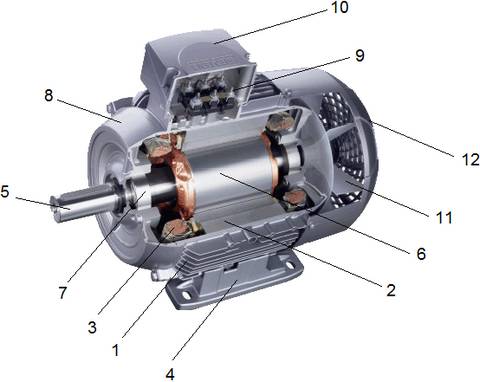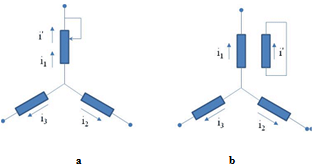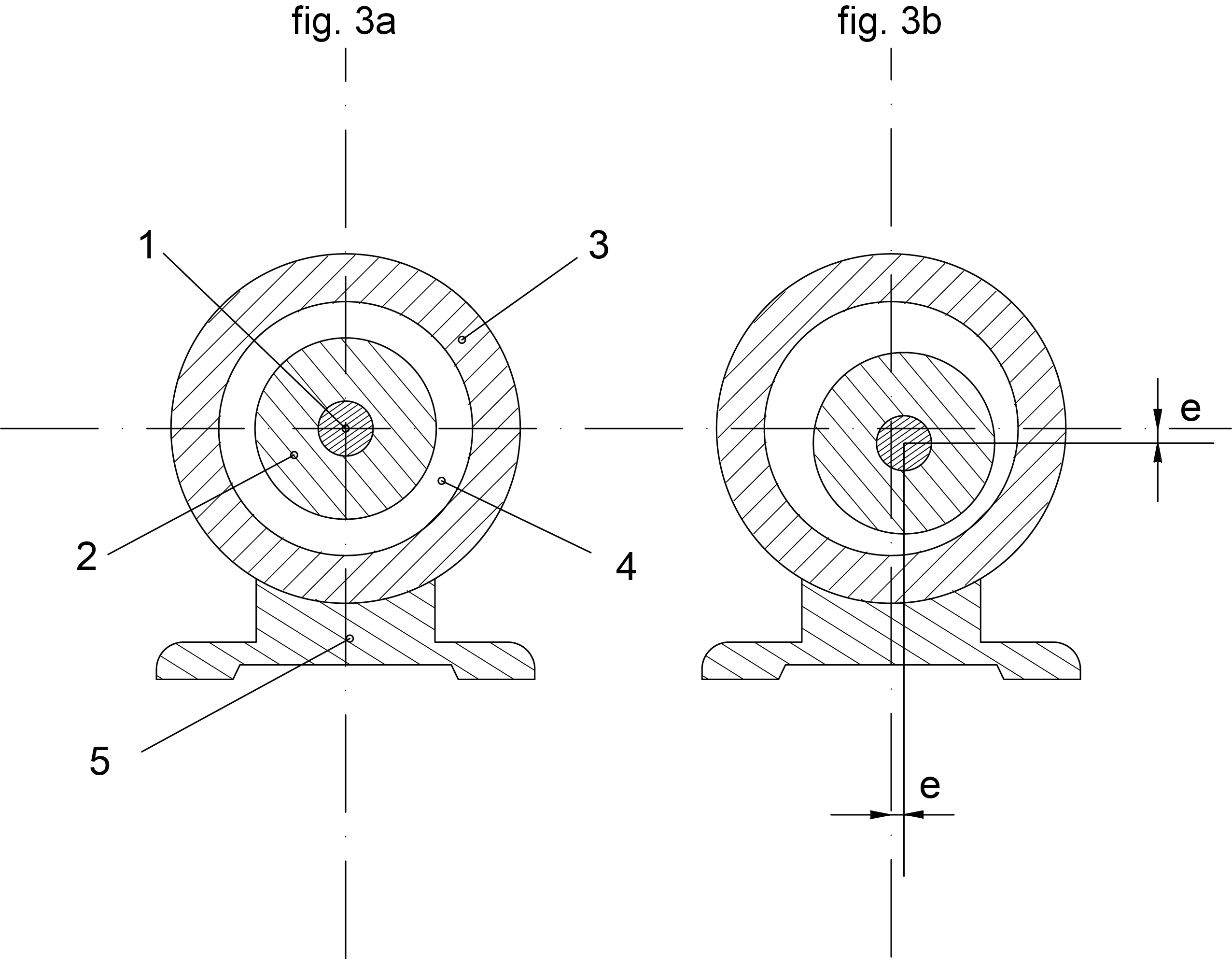-
Paper Information
- Next Paper
- Previous Paper
- Paper Submission
-
Journal Information
- About This Journal
- Editorial Board
- Current Issue
- Archive
- Author Guidelines
- Contact Us
Electrical and Electronic Engineering
p-ISSN: 2162-9455 e-ISSN: 2162-8459
2012; 2(5): 292-296
doi: 10.5923/j.eee.20120205.08
Electrical Machinery Defectsand Diagnosis Methods
Daniel Necula , Nicolae Vasile , Mihail-Florin Stan
Automatics, Informatics and Electrical Engineering Department, Valahia University of Targoviste, Electrical Engineering Faculty 18-24 Unirii Blvd., 130082 Targoviste, Romania
Correspondence to: Daniel Necula , Automatics, Informatics and Electrical Engineering Department, Valahia University of Targoviste, Electrical Engineering Faculty 18-24 Unirii Blvd., 130082 Targoviste, Romania.
| Email: |  |
Copyright © 2012 Scientific & Academic Publishing. All Rights Reserved.
This article presents some defects in the electrical machines and a few methods for appropriate diagnosis. It is part of a broader study that aims to identify electrical or mechanical defects that can occur in electrical machines in operation, a description of their manifestation, prevention and ultimately solutions to remedy them. Intention is that this work becomes a guide to maintenance and repair of the electrical machines that can be used by specialized personnel.It is known that the correct selection of the appropriate machine for each application, the usage of the correct loading and ventilation, the selection of suitable protective elements and the preventive maintenance is the guarantee of extended service life of these machines. It is well known too that a number of concealed defects (both material and regarding the installation) can produce more or less damage, that’s why careful monitoring of electrical machines (especially those of high power) is very important. At least as important are the methods of diagnosis of mechanical or electrical defects, some of which can provide the specialized maintenance personnel with data about the machine itself, before the appearance of defects and without dismantling the machine.The methods used are specific to preventive maintenance such as measurements, verifications, and tests.We conclude that the defects in the electrical machines are multiple, can have internal or external causes, affect nearly all the constructive elements, have specific ways of manifestation, and that their appearance is often preceded by some signs that can warn the operating and maintenance personnel.Compliance with the correct operation scheme of the electrical machines, knowledge of the manifestation of defects, professionalism of the staff, combined with the use of appropriate protective elements may lead to increasing their life span and reduction of the consumption of material and financial resources.
Keywords: Defect, Reversible, Diagnosis, Eccentric, Concentric
Cite this paper: Daniel Necula , Nicolae Vasile , Mihail-Florin Stan , "Electrical Machinery Defectsand Diagnosis Methods", Electrical and Electronic Engineering, Vol. 2 No. 5, 2012, pp. 292-296. doi: 10.5923/j.eee.20120205.08.
Article Outline
1. Introduction
- 1 – stator housing; 2 – stator magnetic core; 3 – stator windings; 4 – fastening pads; 5 – rotor shaft; 6 –magnetic rotor core; 7 –ball bearing; 8 –bearing shield; 9 –terminal block; 10 –terminal box; 11 –fan; 12 –fan cover.- the stator is composed of a cylindrical iron core, which is disposed inside the stator windings; in turn, the stator core is inserted in the stator housing; in general, it plays the inductor role in the electric motors and in the generators it is induced;- the rotor consists of a ferromagnetic core with the rotor winding at the outer periphery; inside the rotor core, coaxial and integral with it, it is the rotor shaft, supported at the two ends by the bearings located in the two shields;- the bearing shields are designed to close the machine mechanically, help to centre the rotor inside the stator and maintain an uniform air gap between the stator and the rotor;- the bearings can be sliding or rolling (bearings); they are designed to allow the rotation of the rotor around its axis inside the stator and can be lubricated with grease or oil.
 | Figure 1. |
2. The Electrical Faults of the Stator
- As mentioned previously, the most common electrical defects of the stator of the electrical machine are the interruption of the coils (open coils) or short circuits between turns of the same phase or different phases. Interruption of a winding during machine operation produces a low torque and speed and increasing current in the other two phases. If the motor is equipped with protection against operation in two phases, it will stop functioning and will limit the fault. In this case, there is a chance for the coil to be repaired and once the insulation is rebuilt to recover the electrical motor. In the event of short circuits between turns, the effects are more severe, the defect leading to the disposal of the machine to replace the coil.
3. Methods of Diagnosis for the Electrical Faults of the Stator
- To diagnose the electrical faults of the stator, several methods are known whose principles are based on the very specific effects of these defects: asymmetries, low torque, increasing phase currents on the working windings. Regarding the importance of electrical machines failures, experts’ opinions are divided. Some authors (A. Bellini, F. Filippetti, C. Tassoni, G. Capolino) believe that the electrical faults due to the condition of the winding and insulation are essential, while others (S. Nandi, Toliyat H., Li X.) consider that mechanical breakdowns, especially those of the bearings, are more important. From our point of view, all types of defects are important. Although some are insignificant at first, they can lead to major defects that can destroy the machine.There are various methods of diagnosis of the stator faults. One of them, developed by Filippetti, proposed transverse admittance as an indicator of failure, this resulting from the ratio of negative sequence component of stator current and the supply voltage positive component. The method is based on the hypothesis that the electrical machine with nNshort-circuit turns, therefore unbalanced, can be assimilated to a symmetrical machine to which nN turns are added, which corresponds to the shorted turns (Figure 2).
 | Figure 2. a) the stator windings connected in star schema with one phase short circuit between turns; b) the equivalent circuit |
4. Mechanical Failure – Rotor
- EccentricityMechanical defects can occur either due to wear over time of the various elements of the electric motor or as a result of mechanical shock transmitted at some point from the driven element. These defects are often generated by issues such as: inappropriate building solutions, improper choice of materials, form or wrong assembly of couplings, improper balance etc. In general, however, the mechanical stress the composing elements and the electrical machine as whole are subjected to does not reach the state of elastic deformation. The mechanical shocks due to uneven load, taken on the rotor shaft, are transmitted to all the building blocks of the machine, in the form of vibrations, over time leading to premature wear and at the moment to the heating of the machine. Besides the vibrations generated by taking over the shocks from driven element, there are times when the machine has its own vibration due to internal causes, such as: unbalanced rotating part (rotor), weakening of the magnetic core wedges rotor shaft rotor, pressing failure or weakness in the functioning of the stator and rotor magnetic core, advanced tread wear of the bearings.The imbalance of the rotating parts is one of the most common causes of vibration with all the adverse effects on the durability of the machine. In practice there are two types of imbalance, namely:- imbalance in a single plane (static);- imbalance in two or more planes (dynamic).One of the situations in which the imbalance of the rotor may occur (in rotor winding electrical machines) is for the rewinding. Non-uniform distribution of winding wire channels contribute to imbalance rotor magnetic core. Other sources of imbalance are uneven distribution of insulating feathers and lake, of the material used for sealing the ends of coils to the commutator segments, etc. Therefore, after rewinding the rotor, special attention is given to the balancing. Balance must be dynamic (in at least two planes), for example by x and y planes. Even after the execution of the rotor balancing operation, a certain residual imbalance remains. It is acceptable, based on experience, that the allowable imbalance is proportional to the rotor mass, thus defining the specific imbalance "e" as the ratio between the residual unbalance (kg/mm) and the rotor weight (kg). The specific imbalance "e" may be regarded as the eccentricity of the center of the mass for a static imbalance (mm). Quality grades of the balancing "G" are provided in international standards, for each grade being provided a range of permissible residual unbalance. A satisfactory quality of balancing of can be done only under a sufficiently high precision mounting of the rotor in its camps.
5. Vibration and Noise in Bearings
- The bearing vibration and noise problem has worsened with the expansion of the use of small dimensions bearings (micro bearings) in the manufacture of micro motors for, and not limited to, office electronics (eg. computers), where noise of bearings may be dominant and disturbing. Movements of the bearings components (rings, cage, rolling bodies) in actual execution and operation generates vibration and noise very important for the situations outlined above.It's possible that the vibration to be weak, but propagated to other elements (in the case of electrical machines to port shields bearing and stator housing) as indirect excitation to cause important vibrations.Practice and experimental research shows that vibration and noise of bearings originate from these phenomena:-movement of rolling bodies (balls) on taxiways (the outer and inner) over localized defects (voids, cracks, peeling tool, foreign bodies from the grease used or accidentally permeated into the work environment);-movement of the rolling bodies over the rolling ways on contact surfaces that have deviations from ideal geometric shape (dimensional deviations, geometric deviations, roughness) or improper tightening;- changes in the position of the rolling bodies depending on the areas more or less affected of the rolling surface.It was also found that there is a strict dependence between the size or shape deviations game and the noise and vibration. Also should be noted that bearing construction and type of contact (surface or punctual) influence the noise and vibration (eg. the same size, roller bearings are 5-14 dB louder than the ball bearings).Radial load has a smaller influence than the axial load on the level of noise and vibration while the rotation speed especially influences this level.One of the effects of a high level of vibration of bearings may be widening holes of port shields bearings where they lean, and can lead to eccentricity of the rotor to the stator.Therefore, one of the common faults of rotating electrical machines is the occurrence of the rotor to the stator eccentricity. This defect may have its origin in an assembly error, or may be caused by loosening bolts fastening the shield bearings during operation, or deformation of the bore that are holding the bearings, which leads to changes in air gap uniformity. In all these cases, the specific element is the appearance of imbalances that disrupt the movement of rotor torque, generating noise and vibration. In severe cases, friction may occur between the rotor and the stator with dramatic consequences on the state of the machine. For these reasons, diagnosis and early detection of defects without dismantling the machine is very important.
6. Diagnosis of Rotor Eccentricity
- Rotor eccentricity has a static and a dynamic component, in practice both manifesting simultaneously. Diagnosis of rotor eccentricity can be done by monitoring the magnetic flux crossing the air gap.
 | Figure 3. a) centered rotor b) eccentric rotor 1-Rotor shafte-Rotor eccentricity 2-Rotor magnetic core 3-Stator 4-Air gap |
 where: f1 is the frequency of the power network andfris the frequency of the rotation of the rotor.Static or dynamic rotor eccentricity can be identified using the method of stator current profile analysis (MCSA).Appropriate side of eccentricity fault frequencies is:
where: f1 is the frequency of the power network andfris the frequency of the rotation of the rotor.Static or dynamic rotor eccentricity can be identified using the method of stator current profile analysis (MCSA).Appropriate side of eccentricity fault frequencies is: where: k is a constant positive integer, Nr is the number of rotor bars, p is the number of pole pairs, ndis the order of eccentricity (nd= 0, for static eccentricity and nd= 1, for dynamic eccentricity), s is the motor slipping, m is the order of harmonic present in the power source of the motor (m = 1, 3, 5, ...) and f1 is the frequency of the source.In the paper Condition Monitoring and Fault Diagnosis of Electrical Motors, the authors show that the method used to detect rotor eccentricity provides satisfactory results only for a certain combination of numbers of pairs of poles and rotor slots.
where: k is a constant positive integer, Nr is the number of rotor bars, p is the number of pole pairs, ndis the order of eccentricity (nd= 0, for static eccentricity and nd= 1, for dynamic eccentricity), s is the motor slipping, m is the order of harmonic present in the power source of the motor (m = 1, 3, 5, ...) and f1 is the frequency of the source.In the paper Condition Monitoring and Fault Diagnosis of Electrical Motors, the authors show that the method used to detect rotor eccentricity provides satisfactory results only for a certain combination of numbers of pairs of poles and rotor slots.7. Trends for the Future of Electrical Machines
- In terms of the future of the electrical machines, concerns are directed towards increasing dynamic performance (torque response), using new encapsulation technologies, development of new types of insulating materials that allow temperatures up to 200 degrees Celsius, using amorphous metallic powders in place of siliceous sheets for the magnetic cores, making of the electric motors without notches, high frequency operation that reduces gauge. Increasing the lifetime of the machine, increasing energy efficiency to reduce energy consumption to minimize environmental impact are also pressing concerns of the specialists in the field.
8. Conclusions
- The electrical machines are complex systems in which a series of phenomena as heating and vibration take place, both of mechanical and electromagnetic nature.Defects in the electrical machines can be mechanical or electrical, caused by internal or external factors, or by the environmental conditions in which they are functioning. It can be said here that between the electrical machine and the environment there is an interaction, in that on one hand the environment (moisture, dust, temperature) affects the functioning the machine and on the other hand, the heat dissipated during machine operation affects the environment.Integrated building of the electrical machines allows the embedding of different types of sensors (temperature, vibration) into their components, making possible the detection of incipient faults and allowing preventive maintenance measures.The recent years imposed edge technology in the construction of electric machines, new materials are used which allow obtaining high power densities / kg, decreasing gauge and increased reliability.
 Abstract
Abstract Reference
Reference Full-Text PDF
Full-Text PDF Full-Text HTML
Full-Text HTML